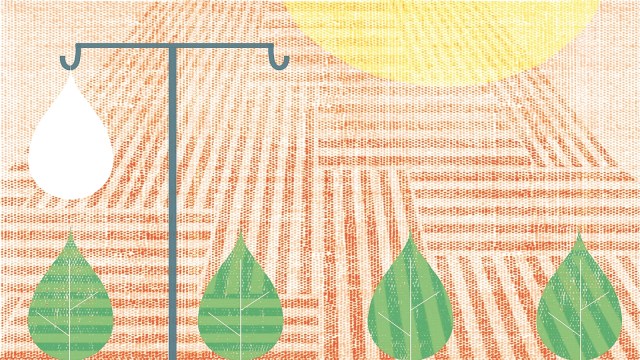
Earth Day was observed on April 22. In 1970, millions of people came out in the US in support of saving this planet — the only one that is known to have intelligent life so far. These concerned citizens, under the leadership of Senator Gaylord Nelson, felt at that time that humanity was damaging this planet’s environment in its race to development. The damage, they feared, could threaten the diversity of life on this planet. More than 50 years have passed, and many Conference of Parties (COPs) have been held, the latest being COP 28 in Dubai, United Arab Emirates, in November-December 2023. And for the first time, agriculture was brought into this agreement. But, India did not sign it, unlike most G20 countries like the US, and China. The reason behind India not signing it was that the government thought it would involve significant changes in agricultural policies and farming practices.
However, the fact remains that the demands for feeding the rising human population are responsible for much of the biodiversity loss on this planet. It took homo sapiens more than 2,00,000 years to become one billion in 1804. But the next billion was added in just 123 years by 1927. And now, within less than 100 years, humanity has multiplied from two billion to more than eight billion. No wonder if humanity had to be saved from the mass famines and starvation deaths, farming had to be done on large swathes of land, clearing forests. In that race against hunger, several species and genetic diversity have been lost. But even large parcels of land under cultivation through traditional and organic methods could not have saved humanity. As Norman Borlaug, the father of the Green Revolution, once said, this planet can four billion people at the most on its own. If science had not come to rescue the situation, many would have starved to death.
Science, like fire, if not used properly can also harm. The Green Revolution, based on high-yielding varieties, irrigation, chemical fertiliser and pesticides did produce more food than humanity needs today. In fact, as per FAO, 30 per cent of the food produced never reaches our stomachs due to high food losses in the journey from harvest to retail and high waste at the consumer end. So, there is no dearth of food supplies, though access to food is an income issue. To ensure that people do not die of hunger, each country has to devise its own policies. India has the largest food subsidy programme in the world, the PM-Garib Kalyan Yojana, under which 813 million people get free rice/wheat.
The issue of harming the planet by inappropriate policies has, however, remained largely unaddressed. For example, the policy of heavily subsidising the use of chemical fertilisers, especially urea, has led to skewed use of nitrogen (N), phosphate (P) and potash (K). The soils have been damaged and are starving for organic carbon. The optimal level of soil organic carbon (SOC) as per the World Food Laureate, Rattan Lal, should be between 1.5 to 2 per cent. The reality of Indian soils, however, is that more than 60 per cent have SOC of less than 0.5 per cent. Our soils are literally in the ICU, but our policymakers appear to be blind to it. Mere slogans of prakritik kheti or natural farming are not going to bring our soils out of ICU. We need to change our policies, especially those of chemical fertiliser subsidies. A simple directional change from heavily subsidising the pricing of N, P and K to direct income transfer to farmers and then letting the prices of N, P and K be decided by the market forces can change a lot. But this needs advance preparations in terms of land records of farmers, the crops they are growing, irrigation, etc. But all this can be done, if one is serious about saving soils.
Take the case of groundwater in India. In most states, it is depleting. In Punjab, Haryana and Rajasthan, the situation is particularly serious, largely because free power for irrigation, minimum support prices and open-ended procurement of paddy (rice) have encouraged rampant groundwater exploitation. All this has led to an ecological disaster in this belt with the water table receding year by year, and paddy fields emitting carbon at the rate of almost 5 tons/ha.
These policies are also leading to the loss of crop diversity. For example, in 1960 in Punjab, only 4.8 per cent of the cropped area was under rice. Today, it is more than 40 per cent, displacing maize, millets, pulses and many oilseeds. Successful high-yielding varieties of rice and wheat also lead to loss of varietal diversity.
India, with only 2.4 per cent of the world’s geographical area, 4 per cent of global freshwater resources, and 18 per cent of the world’s population, is under huge stress, be it its soils, water, air (GHG emissions) or biodiversity.
Unless we change our policies that are peasant-positive but also planet-positive, we will be committing a crime towards our children and grandchildren. Time is running out. Climate change is upon us, and extreme weather events are likely to increase causing massive damage to lives and livelihoods. It is time to wake up and make our food systems not only climate resilient but also bring back our soils to health, arrest groundwater depletion, reduce GHG emissions significantly, and reward biodiversity through green credits. Can we do that in time?
Gulati is Distinguished Professor at ICRIER. Views are personal


